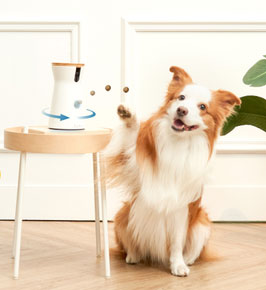In the world of pet care, the debate between feeding raw food versus kibble to dogs has been contentious.
Australian dog owners, in particular, are often torn between the two, largely due to unique breed needs, availability of resources, and climate factors specific to Australia.
This guide aims to provide an exhaustive review of both options, considering the pros and cons, to help you make an informed decision.

Introduction
Welcome to this comprehensive guide where we will explore the often debated topic of raw food versus kibble for dogs, specifically tailored for Australian dog owners.
Whether you’re a new pet parent or a seasoned dog owner, this guide aims to shed light on the nutritional, economic, and health aspects of your dog’s diet.
The Controversy: Raw vs. Kibble
The raw vs. kibble debate has been ongoing for several years, with both sides presenting compelling arguments. Much like the debate of organic vs non-organic.
Some swear by the natural and primal nature of raw diets, while others argue for the convenience and balanced nutrition offered by kibble.
Who Is This Guide For?
This guide is for anyone who owns a dog in Australia or is considering getting one. It’s crucial to understand the nutritional requirements of dogs to ensure their long-term health and well-being.
Why the Australian Context Matters
Australia’s climate, native dog breeds, and lifestyle are unique. These factors often influence the kind of foods available and affordable, making it essential to look at this debate in an Australian context.
The Basics of Dog Nutrition
Before diving into the raw vs. kibble debate, it’s essential to understand the basics of dog nutrition. Dogs, like humans, require a balanced diet to thrive.
Essential Nutrients
Dogs require a balanced diet that includes proteins, fats, carbohydrates, vitamins, and minerals. Neglecting any of these can lead to health issues over time.
Unique Needs of Australian Breeds
Australian breeds such as the Australian Terrier, Kelpie, and Australian Cattle Dog have unique nutritional needs that may differ from other breeds. Knowing these needs can help tailor a more suitable diet.
The Kibble Debate
Kibble is often the go-to choice for many dog owners. Here’s a deep dive into what kibble really is and the various factors to consider if you opt for this feeding method.

What Is Kibble Exactly?
Kibble is a type of dog food that is pre-cooked, dried, and usually sold in bags. It often contains a mix of meat, grains, and vegetables, providing a balanced diet for dogs.
Pros of Feeding Kibble
Kibble is convenient, less messy, and has a longer shelf-life compared to raw food. It is also often fortified with essential nutrients and is generally easier to store.
Cons of Feeding Kibble
Some downsides of kibble include its processed nature, which can sometimes lead to a loss of nutrients. Certain brands may also use fillers and preservatives that aren’t ideal for your dog’s health.
Popular Kibble Brands in Australia
Brands like Advance, Hill’s Science Diet, and Royal Canin are popular in Australia, each offering a range of options tailored to different life stages and health needs.
The Raw Food Debate
Raw food diets have gained popularity, especially among pet owners who are looking for ‘natural’ feeding options. Let’s examine what this entails.

What Constitutes a Raw Food Diet?
A raw food diet generally consists of uncooked meat, edible bones, and organs. Some variations may include fruits and vegetables.
Pros of Feeding Raw
Advocates claim that raw diets offer higher nutritional value and are more aligned with dogs’ ancestral eating habits. This can lead to better coat quality, higher energy levels, and improved overall health.
Cons of Feeding Raw
Raw diets come with risks such as bacterial contamination and the potential for an imbalanced diet. They are also generally more time-consuming to prepare and can be more expensive.
Raw Food Providers in Australia
Companies like BARF Australia and Raw & Fresh offer pre-packaged raw food options that are easy to serve and tailored to meet nutritional requirements.
Understanding the Risks and Myths
It’s easy to get caught in the marketing hype or passionate arguments from either side of the debate. Let’s clear some air by tackling common myths and risks associated with both diets.
Common Myths Debunked
Whether it’s the belief that raw food diets are inherently better due to their ‘naturalness’ or that kibble is always a balanced option, several myths need debunking.
Evidence-based research is the key to making a sound decision.
Health Risks and How to Mitigate Them
Both raw and kibble diets come with their own set of health risks, such as bacterial contamination for raw food and potential filler content for kibble. Knowing these risks can help you take preventative measures.
Veterinary Opinions
Healthcare professionals often have valuable insights based on years of research and hands-on experience. What do Australian vets say about the raw vs. kibble debate?
What Do Australian Vets Say?
Opinions among veterinarians can vary, but the consensus leans towards a balanced diet that can be achieved through both raw and kibble options, depending on the specific needs of the dog.

Case Studies and Research
Several case studies and research articles provide an evidence-based approach to understanding the pros and cons of both diets. Referencing scientific literature can offer unbiased perspectives.
One notable Australian study compared the nutritional composition of a range of raw and kibble diets and found that while kibble often meets industry standards, raw diets can sometimes lack essential nutrients if not carefully prepared.
Another research paper highlighted that dogs on raw diets had healthier gut flora but also a higher risk of parasitic infections.
These findings suggest that both diets can offer benefits, but they need to be carefully managed to mitigate risks.
Real-life Experiences
Anecdotal experiences, while not scientifically rigorous, offer practical insights. Let’s hear from some Australian dog owners who have tried both diets.
Interviews with Australian Dog Owners
We interviewed several Australian dog owners to gather first-hand experiences.
Sally, a dog owner from Sydney, mentioned that her Australian Terrier seemed more energetic and had a shinier coat after switching to a raw diet.
However, she also noticed it was more time-consuming to prepare the meals.
On the other hand, Tom from Melbourne, who owns a Labrador, prefers kibble due to its convenience and lower cost.
He found a specific brand that meets all his dog’s nutritional needs, and the convenience allows him more time to take his dog out for walks.
Both Sally and Tom said they consulted their vet before making any drastic dietary changes.
Transitioning Between Diets: Success and Failure Stories
Switching from kibble to raw or vice versa can be a tricky process. These real-life stories could offer you some practical tips on what to expect during the transition phase.
Economic Considerations
Financial factors are often a decisive element in choosing between raw and kibble. Here, we break down the economic aspects of each diet.

Cost Comparison: Raw vs. Kibble
On the surface, kibble may seem more economical, but when accounting for long-term health benefits or risks, the economic perspective changes. We provide a detailed cost analysis to help you decide.
Time Investment for Meal Preparation
Raw diets usually require more time and effort in meal preparation, while kibble offers the advantage of convenience. How much is your time worth?
Environmental Impact
As responsible citizens, it’s essential to consider the environmental footprint of our choices. How do raw and kibble diets stack up in this regard?
Carbon Footprint of Kibble Production
Manufacturing kibble involves several processes, each with its own environmental impact. Learn about the carbon footprint associated with kibble production.
Sustainability of Raw Diets
Raw diets can be more sustainable if sourced responsibly. Explore how choosing local and seasonal products can mitigate the environmental impact.
Convenience and Availability
Finally, let’s talk about the convenience factor and how accessible these diet options are for the average Australian dog owner.
Shelf Life and Storage
Kibble usually has a longer shelf life and is easier to store, whereas raw food needs proper refrigeration and quicker consumption.
Where to Buy: Online vs. Local Stores
Both raw and kibble foods are widely available in Australia from a variety of brands, both in physical stores and online.
Do your research by comparing reviews and prices to ensure you are getting a quality product at a fair price.
You may find that online stores provide a lower price but local stores have the convenience of not waiting for delivery.
Customizing the Diet for Your Dog
No two dogs are the same, and neither are their dietary needs. Here’s how to customize the diet according to your dog’s individual requirements.

Dietary Needs by Life Stage
Puppies have different nutritional needs than adult or senior dogs. Learn how to adjust the diet according to your dog’s life stage.
Special Conditions: Allergies, Obesity, and Illness
Special conditions such as allergies, obesity, or chronic illnesses can greatly affect dietary choices. We offer guidelines on how to navigate these challenges.
Conclusion
Choosing between raw and kibble is a significant decision that will impact your dog’s health and well-being.
Both have their pros and cons, and the best choice often depends on various factors, including your dog’s specific needs, your lifestyle, and your budget.
Key Takeaways
To sum up, both raw and kibble diets can be suitable for your dog if carefully planned and balanced. Consult your vet, consider your lifestyle, and pay attention to your dog’s unique needs.
Final Recommendations
Our final recommendation is to consult your veterinarian for a personalized dietary plan. Every dog is different, and what works for one may not work for another.











